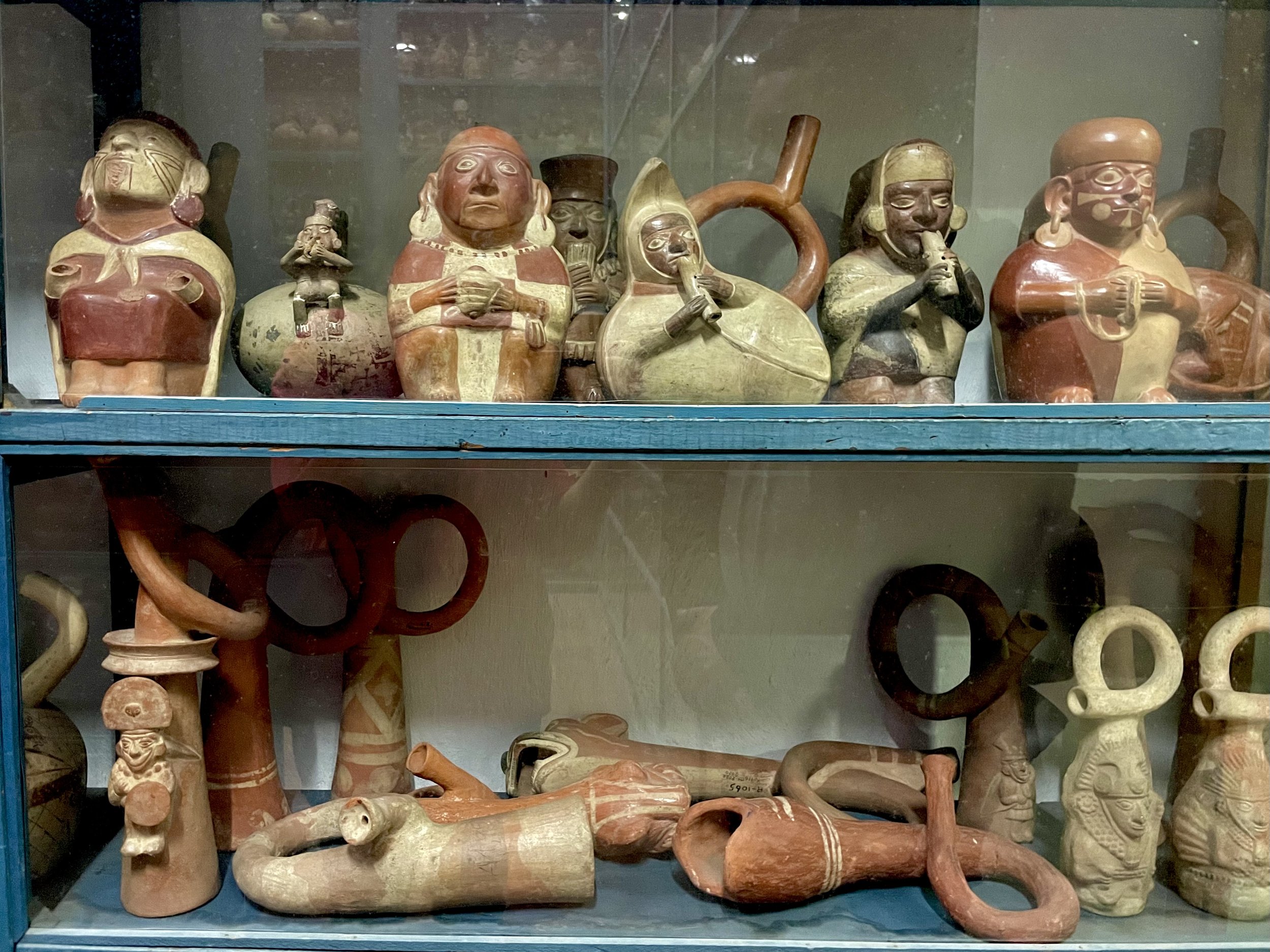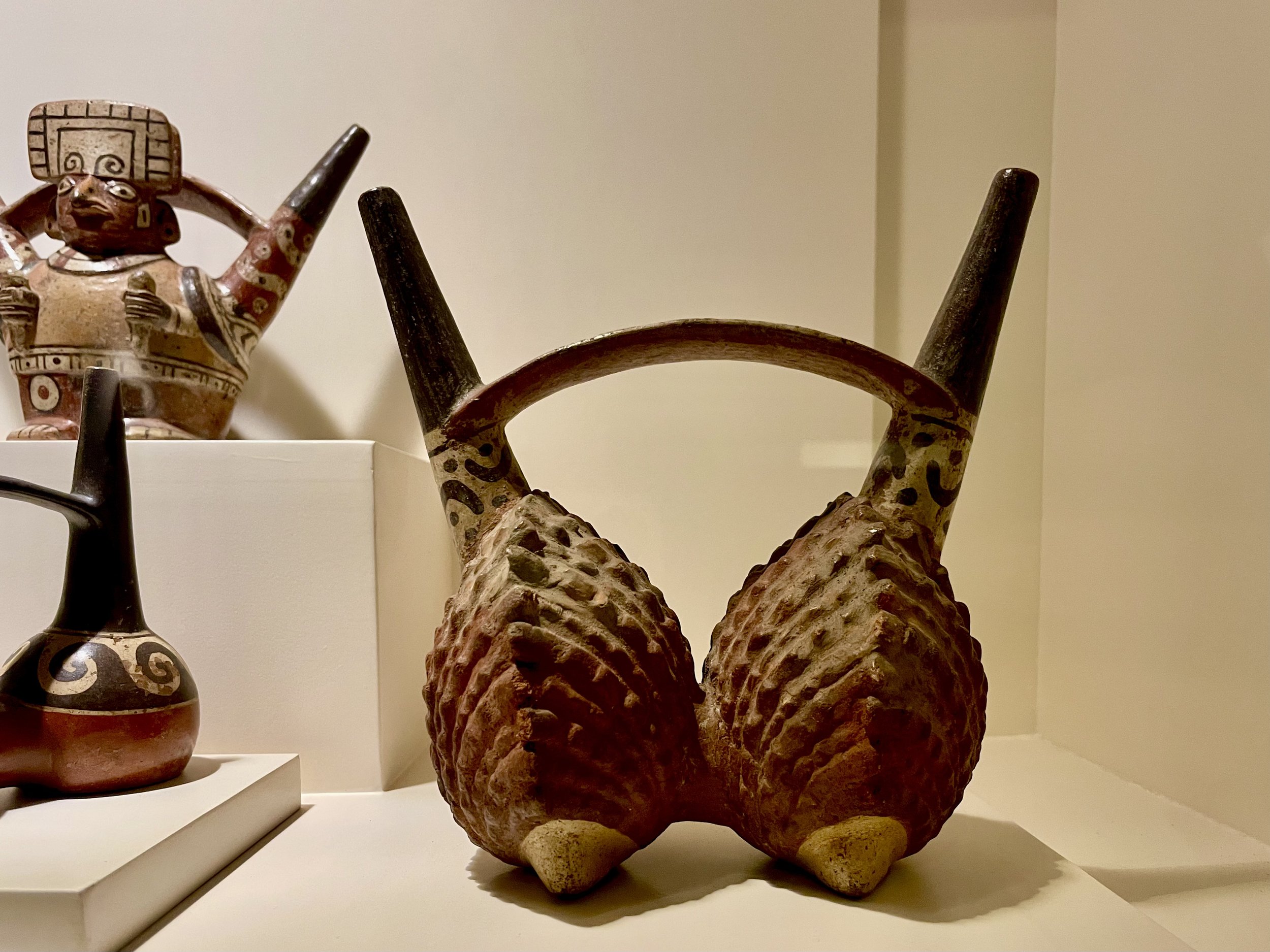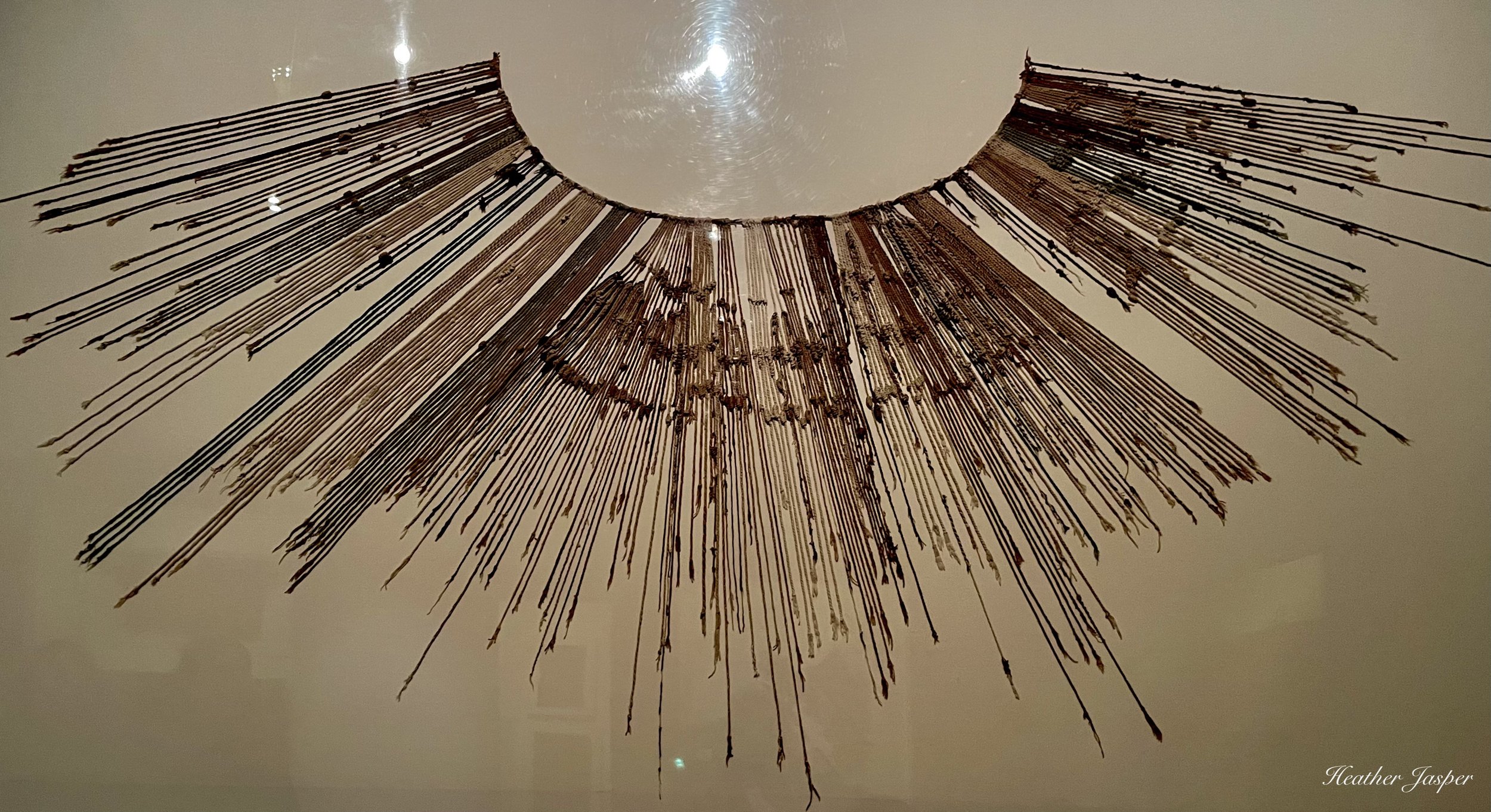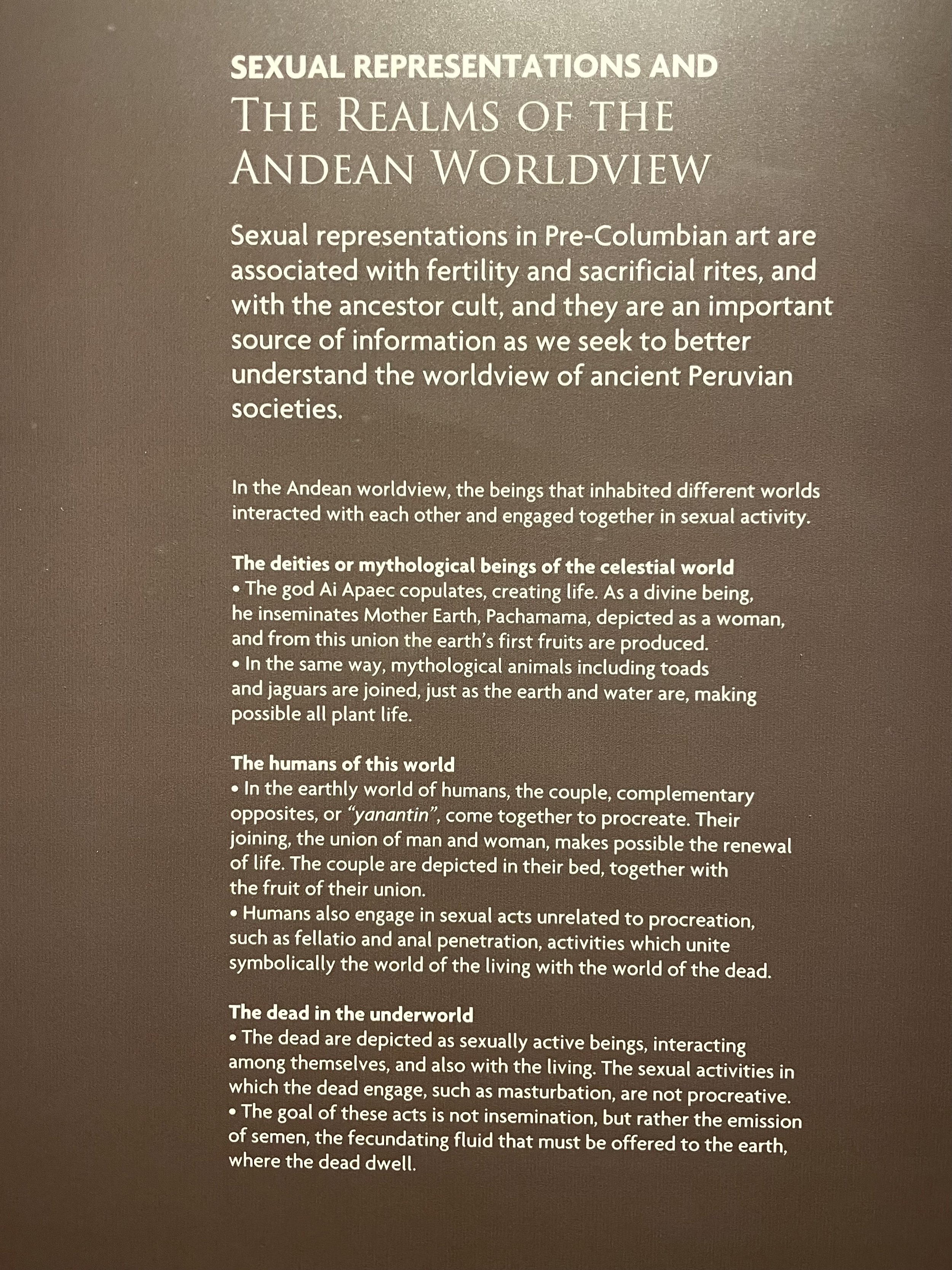Larco Museum, Lima
The Larco Museum is the best museum in Lima, Peru
I know it’s a bold statement, but that’s my humble opinion.
The majority of the museum is Moche ceramics, though it has a bit of everything.
Click on the photo above to see it in more detail.
The entrance to the museum is several vast rooms full of glass cases of thousands of unclassified ceramics, mostly from the Moche culture. It’s an impressive collection of what most museums would keep hidden in back rooms for lack of space. I appreciate that so much is displayed, even if there isn’t a plaque with information for each piece.
They’re grouped together by theme. Dozens of cats shelved together, hundreds of vases shaped like people with fangs, dozens of corn cobs with human faces and hundreds upon hundreds of stirrup-top vases with paintings of all kinds of animals.
Caballito de Totora
This ceramic vase shows people on totora reed “caballitos” which are a cross between a boat and a surfboard. Sometimes they’re depicted with animals, like monkeys, but this one has a spondylus shell.
The most sacred shell
Spondylus shells were more valuable than gold in Incan and pre-Incan cultures. They’re a spiny oyster that lives in very deep water and has beautiful red and purple shells.
The quipu was used to record numbers of everything from crops and livestock to population growth and soldiers.
Textiles at the Larco Museum
There are very few textiles at the Larco Museum, though textiles were more important than ceramics in many pre-Incan cultures.
Human sacrifices
This sculpture shows people falling, or being thrown, from mountain peaks. A figure representing a deity, possibly an apu, watches the sacrifices. This is a Moche ceramic, dated between 1-800 CE.
Inca Gold
Though the Spanish stole most of the Inca’s gold, there was so much that even they couldn’t take it all.
The Larco Museum has a small collection of metal objects, including gold artifacts. The vast majority of the Larco collection is ceramics.
Ancient nose rings
The gold and turquoise nose rings are flashy, but I like the one shaped like a crab the best.
Explanations for erotic art
The Larco Museum’s erotic art exhibits come with a lot of plaques that put the art in context. A lot of the information is about cultural connotations of symbolic sex that fertilizes the earth (pachamama) for agriculture.
There is also a lot of information about the symbolism of the dead as sexually active, also for the purpose of making the earth fertile.
Larco Museum’s Erotic Gallery is famous.
Scroll through the photos at your own risk.
The Erotic Gallery is exactly what it sounds like. It’s almost entirely ceramics and most of those are vases or other recipients for liquids. There are plenty of sculptures of animals having sex: deer, monkeys and even mice. Then there are the skeletons having sex, representing the cycle of life and death. Most skeleton ceramics are seen in groups, each skeleton masturbating another. A few skeletons are engaged in solo masturbation.
Another common theme is the ceramics of a man and woman having sex, sometimes while the woman is breastfeeding a baby. Other sculptures are made so that the person drinking from the recipient will have to drink from either a penis or a vagina.
These ceramics were used in fertility ceremonies.
There used to be a section of the Erotic Gallery devoted to homosexual sculptures and the role of homosexuality in pre-Incan cultures. Unfortunately, that exhibit has disappeared. I hope it’s not the effect of conservative politics on art and archeology, though I can’t think of any other reason to remove an entire exhibit like that from a private museum.
How to get to the Larco Museum?
The Larco Museum is not in a touristy area of Lima, so you’ll need to take a taxi. There’s not much else in the area, so it’s unlikely you’d want to walk there.
Visit the Larco Museum’s website for more information.
The Larco Museums’s grounds
The museum has huge gardens and a lovely café, making it a great place to go if Lima’s gray skies start to get you down.





























